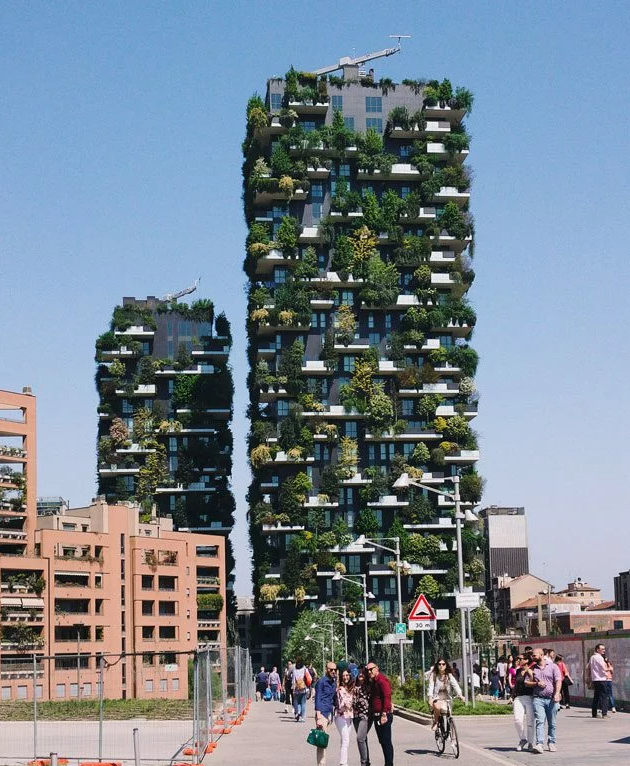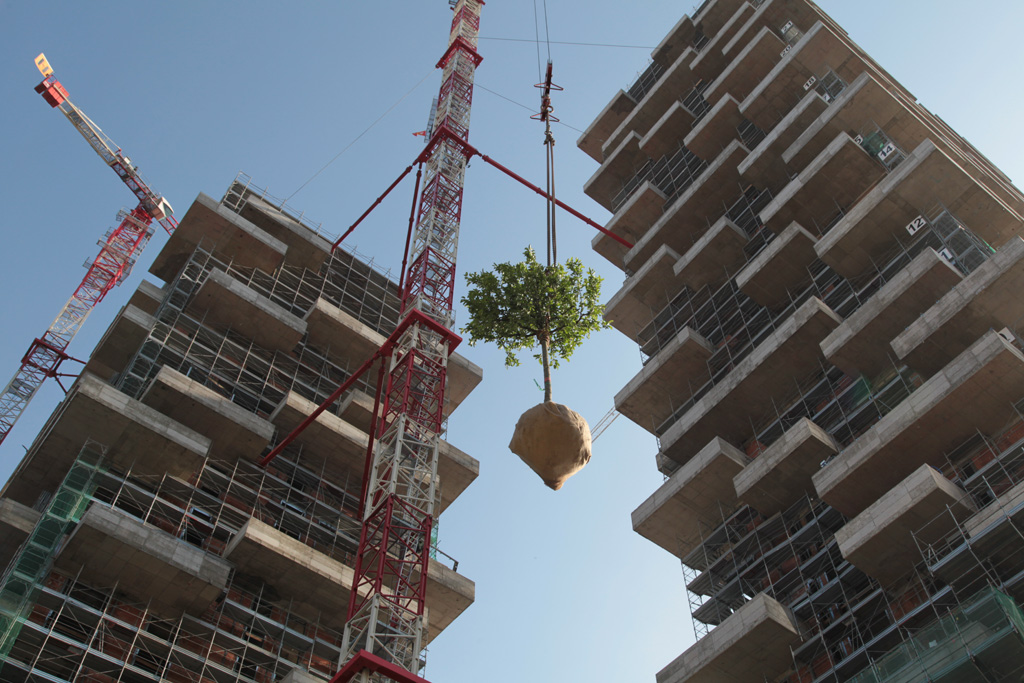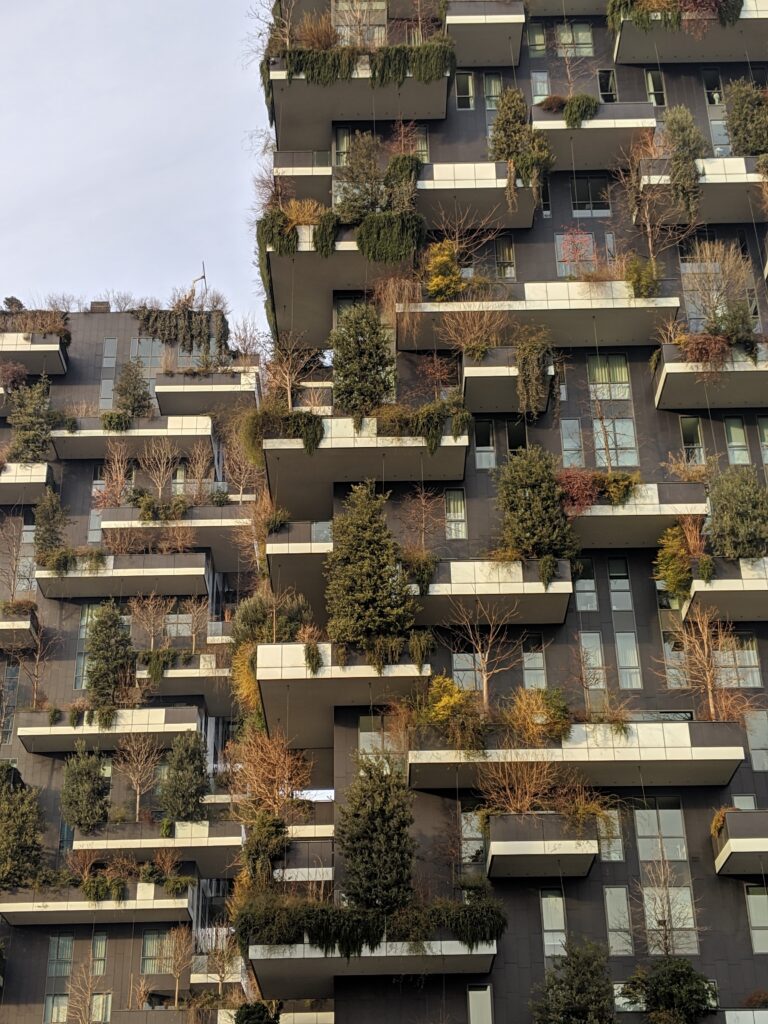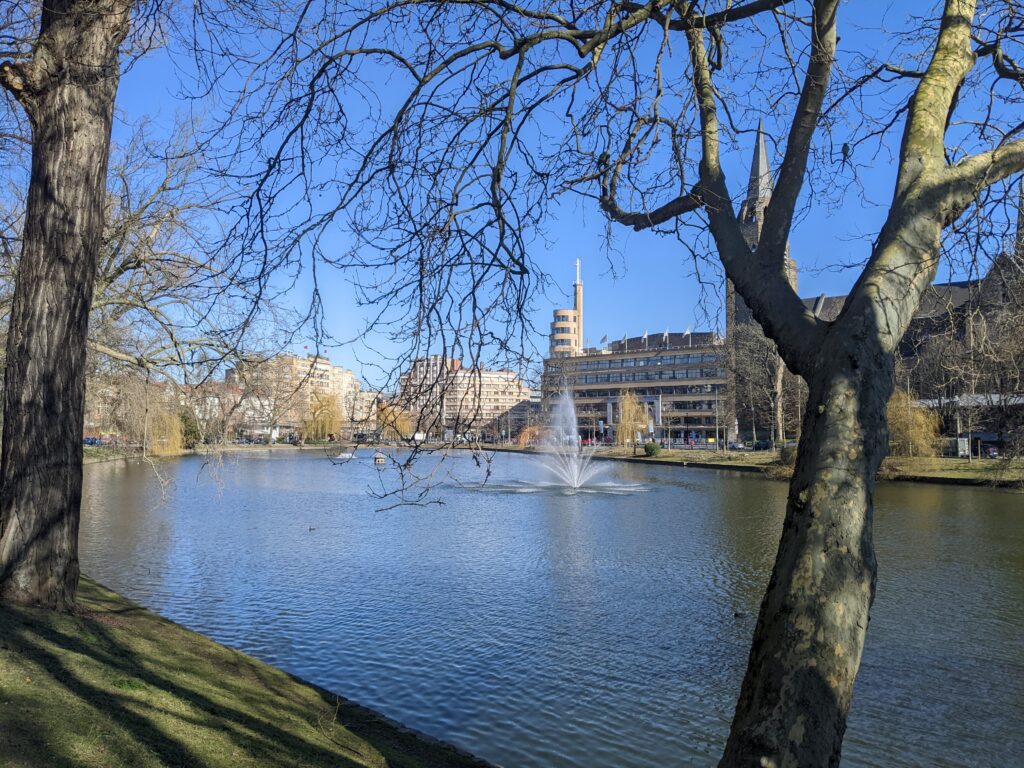Green building: stop the greenwashing
How are those involved in urban design taking ownership of the greening of buildings – greenwashing or a genuine environmental approach?
On building site signs or in the 3D images of architectural competitions, we often see trees and green anywhere and everywhere, and frankly in any way, and it does sell! How can we distinguish a genuine strategy for integrating biodiversity into buildings from a simple plastering of green on balconies, facades and roofs?
Let’s start by deconstructing the myth of the Bosco Vertical, a building in Milan and the totem of ‘green’ real estate.

Behind the seductive image of the project, the vaunted virtues of pollution reduction, absorption of CO2 emissions and reduction of the urban heat island effect, we need to reveal some of its limitations:
- Behind the image of a vertical forest lies a reinforced concrete framework of 2 towers, 17 and 24 storeys high.
- The extra concrete needed to reinforce the balcony slabs, which have to bear the weight of the topsoil and planting
- The automatic watering system installed to irrigate the 10,000 m² of above-ground vegetation
- The appearance of undesirable effects such as the invasion of homes by mosquitoes and insects
- In winter, when Milan is cold and dry, the stripping back of trees gives a completely different impression of the project, with much less lush vegetation


Milan is one of the cities with the worst air quality in the world, so greening buildings is only a cosmetic solution or a last resort. On the other hand, it would be better to give priority to removing the waterproofing from urban soils. Soil and water are real carbon sinks, and let’s not forget that under Milan’s cobblestones there is a system of canals!
The greening of buildings should therefore not be presented as a miracle solution in itself, but as part of an overall strategy for resilience and adaptation to climate change. Urban form, building materials, the composition of facades and the albedo of claddings are all parameters to be taken into account in mitigating the effect of the urban heat island.
If it is to be effective, the greening of urban blocks must be considered not only at the scale of the building, but also at the scale of public spaces and the city as a whole, with the establishment of green and blue grids.
Finally, the aim is to decarbonise uses, mobility, heating of buildings and economic and industrial activities, given that Milan is Italy’s economic capital.

Pour aller plus loin:
https://www.cerema.fr/fr/actualites/rafraichir-villes-guide-synthetique-propose-approche
https://chroniques-architecture.com/forets-verticales-cactus-deshydrates

